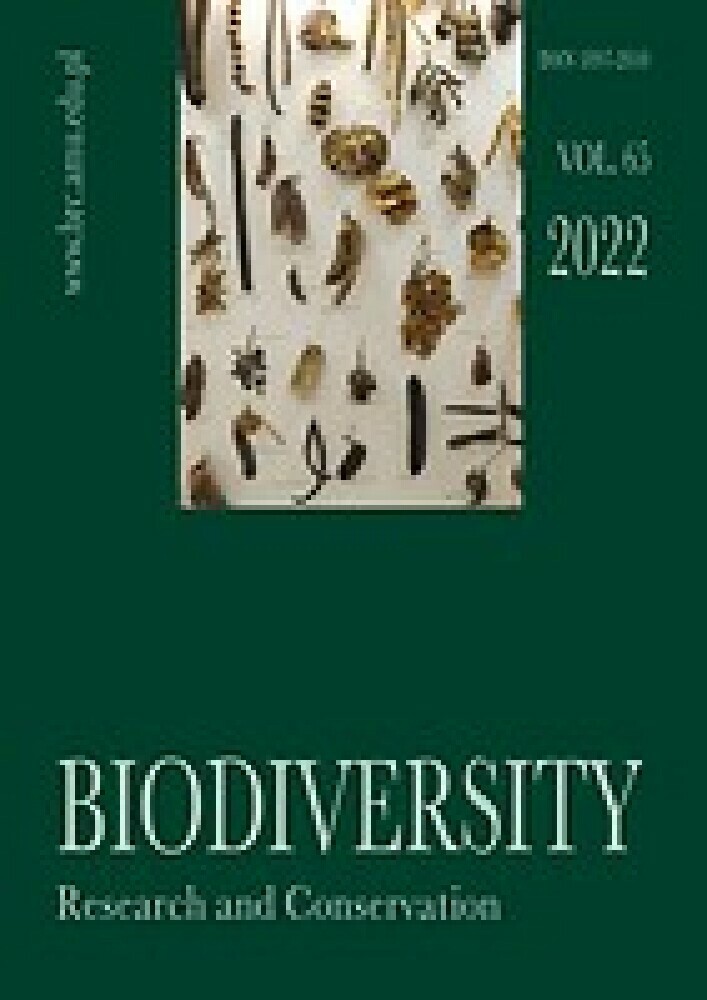Abstract
The paper describes the interfaces implemented in the AMUNATCOLL IT system, which enable access to and explorationand manipulation of data available in the database containing unique natural collections from the Faculty of Biology of Adam Mickiewicz University in Poznań (FBAMU). Data can be accessed using the two available interfaces: graphical and programming application interfaces. The first is implemented in two forms: a portal, which is the main interface for accessingthe data stored in the database, and a mobile application that complements functions related to field research and creating private collections. To deliver the required set of operations, the portal was equipped with simplified and advanced searching, statistical analysis and spatial processing (BioGIS). Data openness and the ability to collaborate with other solutions and systems are key elements in achieving synergies in conducting research on biodiversity. AMUNATCOLL IT offers an opportunity to respond to these challenges, enabling data export for independent processing with external tools related to portal functionality or giving access to data directly using an application programming interface. Graphical interfaces are subject to numerous requirements and restrictions reflected in the graphic design and accessibility issues related to the accommodation of disabled individuals. These interfaces must properly address both groups of target recipients, considering their different goals and level of knowledge, as well as adjusting the level of interaction due to the limitations of using the interface.
Funding
This work has been supported by the AMUNATCOLL project and has been partly funded by the European Union and Ministry of Digital Affairs from the European Regional Development Fund as part of the Digital Poland Operational Program under grant agreement number: POPC.02.03.01-00-0043/18.
References
API 2021. Application Programming Interface. [Online] Available at: https://en.wikipedia.org/wiki/API
BioCASe 2021. Biological Collection Access Service. [On¬line] Available at: https://www.biocase.org/
DJA 2021. Django framework. [Online] Available at: https://www.djangoproject.com/
FAIR 2021. FAIR Principles. [Online] Available at: https://www.go-fair.org/fair-principles/
GBIF 2021. The Global Biodiversity Information Facility. [Online] Available at: https://www.gbif.org/what-is-gbif
GEO 2021. GeoJSON geographic data structures encoding format. [Online] Available at: https://geojson.org/
GUN 2021. Gunicorn – Python Web Server. [Online] Avail¬able at: https://gunicorn.org/
iDigBio 2021. Integrated Digitized Biocollections. [Online] Available at: https://www.idigbio.org/
Jackowiak B., Błoszyk J., Dylewska M., Nowak M. M., Szkudlarz P., Lawenda M. & Meyer N. 2022. Digitizationand online access to data on natural history collections of Adam Mickiewicz University in Poznan: assumptions and implementation of the AMUNATCOLL project. Biodiv. Res. Conserv. 65: 23-34.
JWT 2021. JWT – JSON Web Tokens. [Online] Available at: https://jwt.io/
KEW 2021. The herbarium at the Royal Botanic Gardens Kew. [Online] Available at: http://apps.kew.org/herbcat/navigator.do
KML 2021. Keyhole Markup Language. [Online] Available at: https://en.wikipedia.org/wiki/Keyhole_Markup_Language
LEA 2021. Leaflet – library for mobile-friendly interactive maps. [Online] Available at: https://leafletjs.com/
MNP 2021. Muséum national d'Histoire naturelle in Paris – collections. [Online] Available at: https://science.mnhn.fr/institution/mnhn/item/search
NDP 2021. Natural History Museum Data Portal. [Online] Available at: https://data.nhm.ac.uk/about
Nowak M. M., Słupecka K. & Jackowiak B. 2021. Geotaggingof natural history collections for reuse in environmental research. Ecol Indic 131: 108131.
PAN 2021. Pandas – data analysis tool. [Online] Available at: https://pandas.pydata.org/
PIX 2021. PixiJS – advanced text rendering graphic. [Online] Available at: https://pixijs.com/
PVM 2021. Plantes vasculaires at Muséum national d'Histoire naturelle. [Online] Available at: https://www.mnhn.fr/fr/collections/ensembles-collections/botanique/plantes-vasculaires
PYT 2021. Python language. [Online] Available at: https://www.python.org/
REA 2021. React – JavaScript library. [Online] Available at: https://reactjs.org/
SEO 2021. Search engine optimization (SEO). [Online] Available at: https://en.wikipedia.org/wiki/Search_en¬gine_optimization
SMI 2021. Smithsonian National Museum of Natural History. [Online] Available at: https://collections.nmnh.si.edu/search/
TRO 2021. Tropicos database. [Online] Available at: http://www.tropicos.org/
WCAG 2021. Web Content Accessibility Guidelines. [Online] Available at: https://en.wikipedia.org/wiki/Web_Con¬tent_Accessibility_Guidelines
WMS 2021. Web Map Service. [Online] Available at: https://en.wikipedia.org/wiki/Web_Map_Service
License
Copyright (c) 2022 Maciej M. Nowak , Marcin Lawenda, Paweł Wolniewicz, Michał Urbaniak, Bogdan Jackowiak

This work is licensed under a Creative Commons Attribution-NonCommercial-NoDerivatives 3.0 Unported License.





